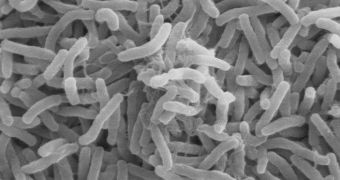A group of investigators at the Rensselaer Polytechnic Institute (RPI) recently managed a significant breakthrough in their studies of the dangerous bacteria Vibrio cholerae. The bacterium is the agent that causes the terrible infectious disease known as cholera, but the team believes that this disease may soon become a thing of the past. The group, led by RPI associate professor of biology Blanca Barquera, managed to discover a mechanism the bacteria uses to produce energy, that has never been seen before in other creatures. This raises hope that the pathway could be used to attack the microorganism.
The scientists basically discovered a previously-unknown mechanism inside an enzyme, whose job is to provide the bacteria with precious energy, and thus sustain a potential infection in a human host. Given that we don't have this enzyme, it stands to reason that bioengineers could devise substances that will attack this molecule specifically, without inflicting any harm on other chemicals in the human body. Details of the new discoveries appear in the June 28 issue of the esteemed journal Proceedings of the National Academy of Sciences (PNAS).
According to the paper, the enzyme dubbed Na+-NQR plays a crucial role in converting food into energy for V. cholerae. But the molecule also plays an additional, perhaps even more important, role. It is responsible for electrically charging the cellular membrane encircling the bacteria, which means that it is in charge of powering up a vast number of physical and chemical processes going on inside the cells. If this power plant is broken apart via drugs, then all processes depending on it would end, and the bacterial cell would die.
“Cellular respiration is remarkable. It is one of the most efficient energy conversion processes known, and nevertheless, does not require high temperatures. This efficiency has drawn the attention of researchers,” the team leader explains. She adds that bacteria tend to carry out this process – which carries electrons from food to oxygen, releasing energy – in the cellular membrane, because they lack specialized organelles to do the job inside the cell. In more complex organisms, such as humans, the job is performed by mitochondria, specialized organelles inside the cells that are affectionately referred to as the “cellular power plant.”
“Na+-NQR plays the same role as human respiratory proteins but it is much smaller. We want to understand how it works, how it produces energy. If we understand how Na+-NQR works, we can learn the basic principles used by living organisms to convert energy and transport ions,” Barquera concludes.

 14 DAY TRIAL //
14 DAY TRIAL //